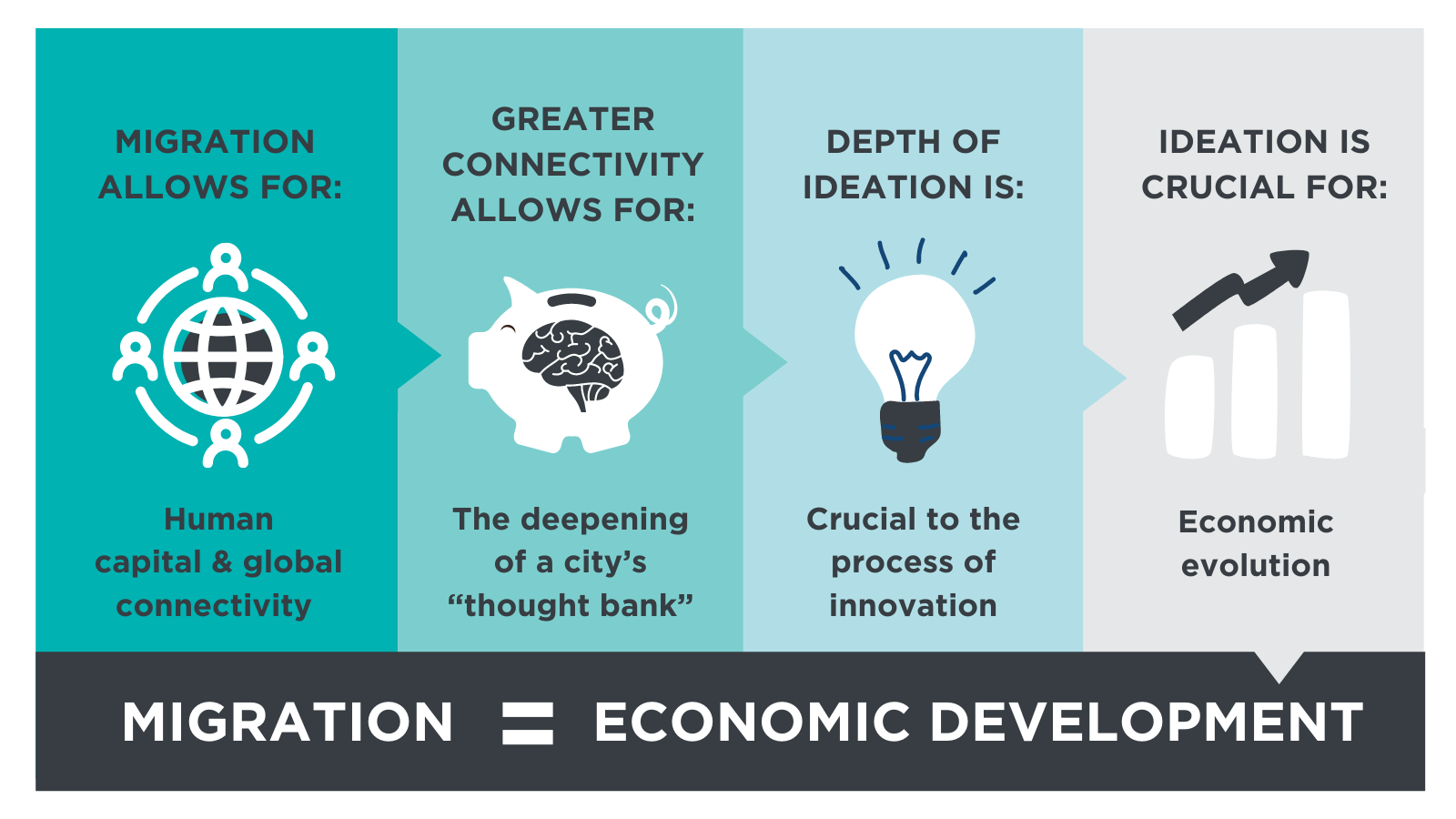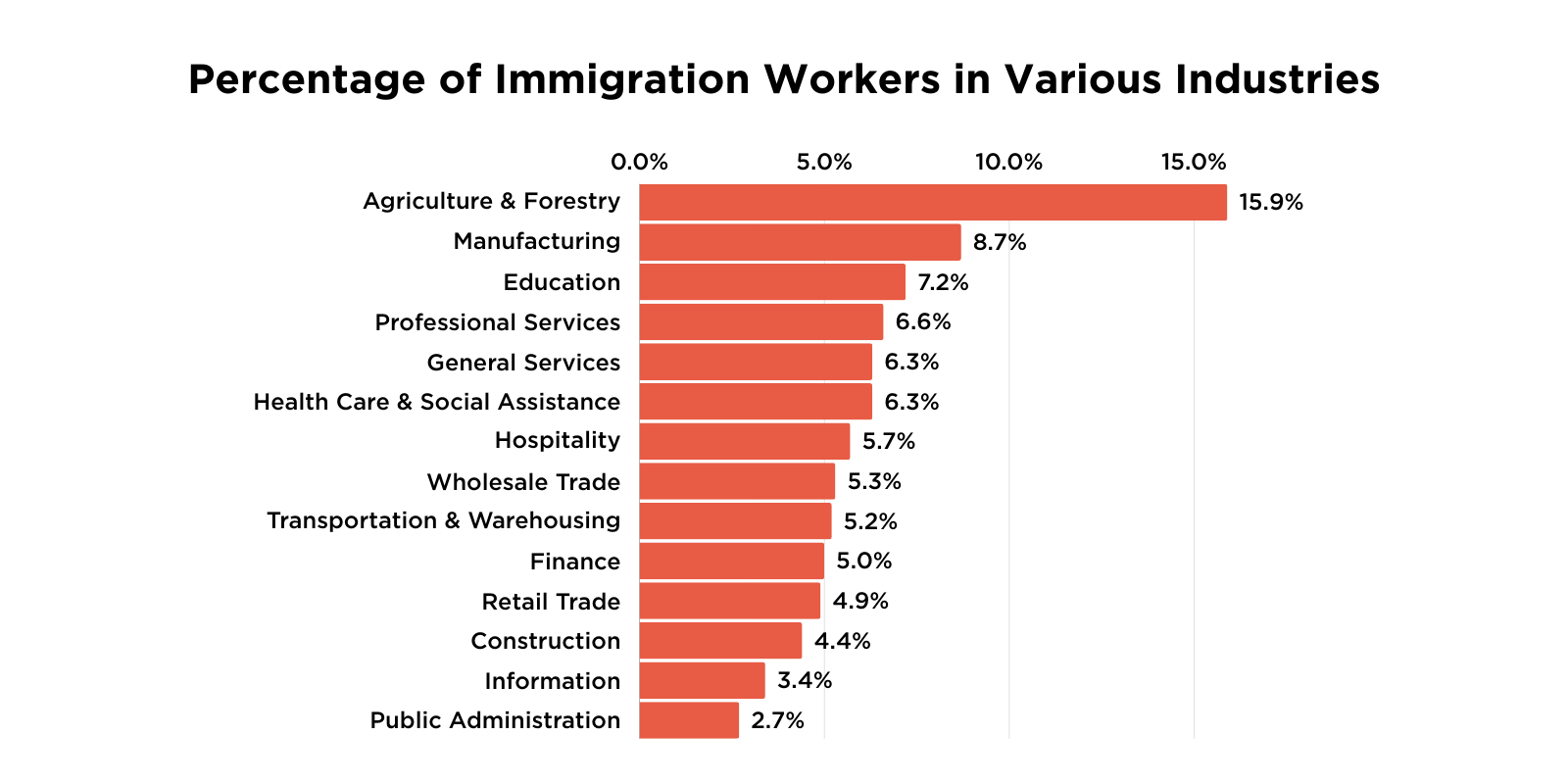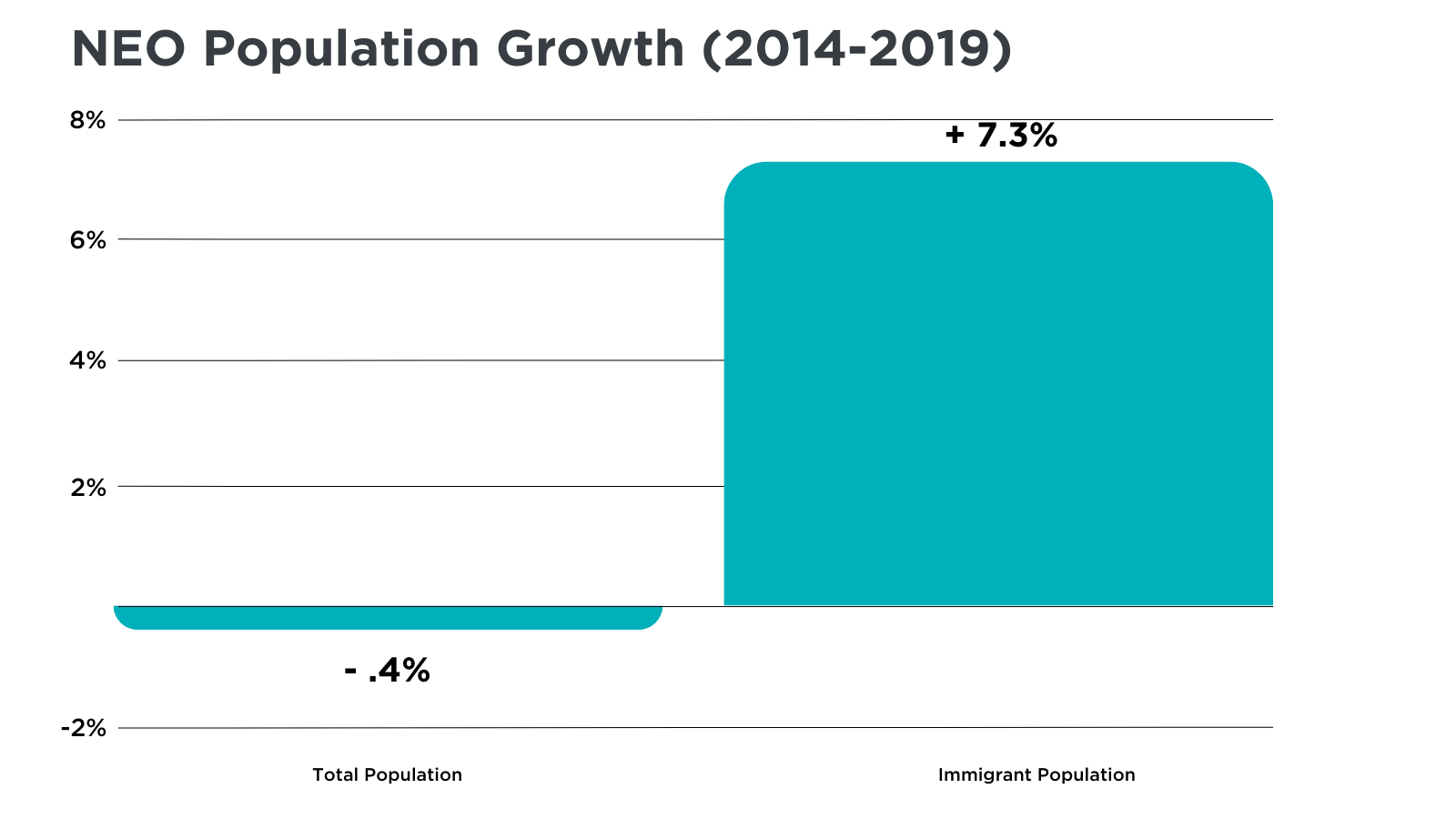The Immigrant Impact in Northeast Ohio
Embracing international newcomers is essential for the economy and culture of Northeast Ohio. Learn more about how immigrants and refugees impact our region.
Economic Contributions of Immigrants
As we strive to make Cleveland and Northeast Ohio an economic powerhouse of the midwest, we would be remiss to ignore the contributions of immigrants and refugees. Countless studies and reports support the fact that foreign-born individuals have numerous positive effects on our economy – contributing to state taxes, federal taxes, and the GDP.
While we look to bolster our economy, we need to consider how the economic power of international newcomers can be maintained, nurtured, and grown. As a city, a region, and a people, we need to embrace the economic opportunities that immigrants and refugees provide.
The net fiscal impact of refugees and asylees was positive over from 2005-2019, at $123.8 billion.
This means that refugees and asylees contributed more revenue than they cost in expenditures to the government.
*The Fiscal Impact of Refugees and Asylees at the Federal, State, and Local Levels from 2005-2019
$11,800,000,000
GDP
Northeast Ohio foreign-born residents contributed $11.8 billion to the region’s GDP in 2019.
$1,000,000,000
Federal Taxes
Northeast Ohio immigrant households payed $1 billion to federal taxes in 2019.
$3,900,000,000
Spending Power
Northeast Ohio foreign-born households held $3.8 billion in spending power in 2019.
$520,800,000
State Taxes
Northeast Ohio immigrant households payed $520.8 million to state taxes in 2019.
*New Americans in Northeast Ohio, The Demographic and Economic Contributions of Immigrants in the Region

Rust Belt Analytica completed a report that found that migration is crucial to the evolution of cities. Migration does not only allow for the accumulation of human capital, but for global connectivity as well. Connectivity is part and parcel with the act of migration, allowing for the deepening of a city’s “thought bank”. This depth of ideation is crucial to the process of innovation which, in turn, is crucial economic evolution.
Put another way, migration is economic development. It is today. It was yesterday. And it will be tomorrow.
Workforce Contributions of Immigrants
Northeast Ohio is facing a workforce shortage. The report, Aligning Opportunities in the Northeast Ohio Region, found that by 2025, our region will not have enough qualified workers to fill our demand. These shortages are already beginning to present themselves. The largest supply and demand gap has been found in the Healthcare, Manufacturing, and IT fields.
-156,000
Labor Force Loss From 2001-2019
*Aligning Opportunities in the Northeast Ohio Region

43,363
Unfilled Health Care Positions
26,962
Unfilled Manufacturing Positions
15,544
Unfilled IT Positions
Top In-Demand Careers (2021)
*Aligning Opportunities in the Northeast Ohio Region
We cannot speak about international newcomers without acknowledging their invaluable contributions to our workforce. Northeast Ohio may be facing a workforce shortage, but international newcomers are the answer.
Gateways for Growth found that Northeast Ohio is home to nearly 7,000 international higher education students, many of whom graduate with STEM degrees. However, less than 10% of these students are given the chance to stay and work int he region after graduation. Were we to retain a greater percentage of international graduates living in working in Northeast Ohio after graduation, it will help address our workforce shortages.
According to the American Immigration Council, “more than two in five (42 percent) adult immigrants had a college degree or more education in 2018, while fewer than one in five (17 percent) had less than a high school diploma.”

*New Americans in Northeast Ohio, The Demographic and Economic Contributions of Immigrants in the Region
Population Impact of Immigrants
Northeast Ohio’s population has been steadily declining for years. As the birthrate declines for native Ohioans, we need to look to the acquisition of international newcomers to help bolster our population.
According to New Americans in Northeast Ohio, Northeast Ohio’s population would have doubled were it not for our influx of immigrants. 14.8% of immigrants in Northeast Ohio had arrived in the last five years, as of 2019.
New Americans in Northeast Ohio reported that 156,800 immigrants lived in Northeast Ohio in 2019. This means that the immigrants made up 5.7% of the total population in our region in 2019.
-173,000
NEO Population Loss from 2001-2019
*Aligning Opportunities in the Northeast Ohio Region

We also need to recognize the contributions of naturalized citizens. An immigrant or refugee who becomes naturalized is considered an official citizen of the United States. Of our foreign born population in Ohio, 54.4% have become naturalized, according to the most recent U.S. Census Data.
These foreign-born Americans are contributors to our population, economy, and workforce.
Cultural Impact of Immigrants
Immigrants and refugees have long been significant contributors to the rich tapestry of culture in their adopted countries. Through their diverse backgrounds, experiences, and traditions, they infuse new vitality and vibrancy into the social fabric. One of the most palpable ways immigrants and refugees enrich culture is through cuisine. They bring with them unique culinary traditions, spices, and flavors, introducing new dishes that tantalize taste buds and expand culinary horizons.
Beyond food, immigrants and refugees also introduce music, dance, art, and literature that reflect their heritage and experiences. Their cultural expressions often challenge dominant narratives and broaden perspectives, fostering greater appreciation and understanding of diversity.
Moreover, immigrants and refugees play a pivotal role in preserving and revitalizing cultural traditions that may be at risk of fading away. By practicing and passing down ancestral customs, languages, and rituals, they ensure the continuity of heritage for future generations. This cultural exchange not only enriches the host society but also fosters a sense of belonging and identity for newcomers, helping them navigate the challenges of integration.

In essence, immigrants and refugees are catalysts for cultural evolution and innovation. Their presence fosters a dynamic exchange of ideas, values, and perspectives, enriching society with a mosaic of traditions and experiences. Embracing and celebrating this diversity not only enhances cultural vitality but also strengthens social cohesion and promotes mutual respect and understanding across communities.




